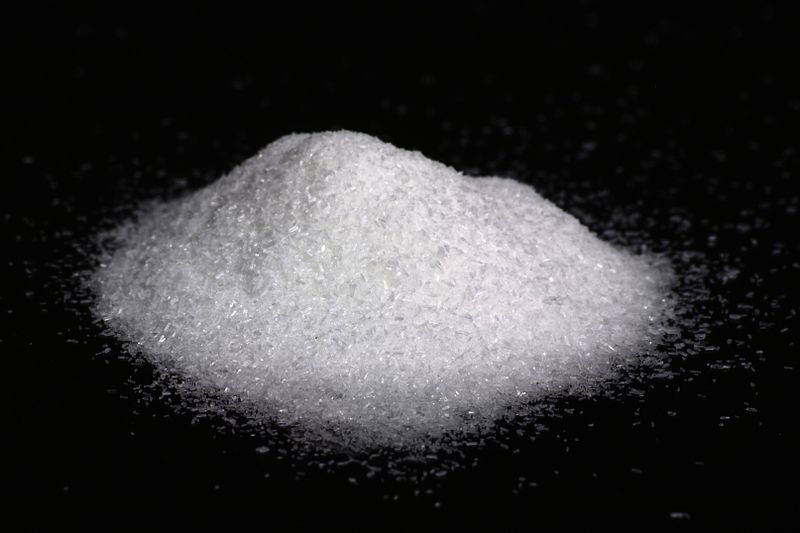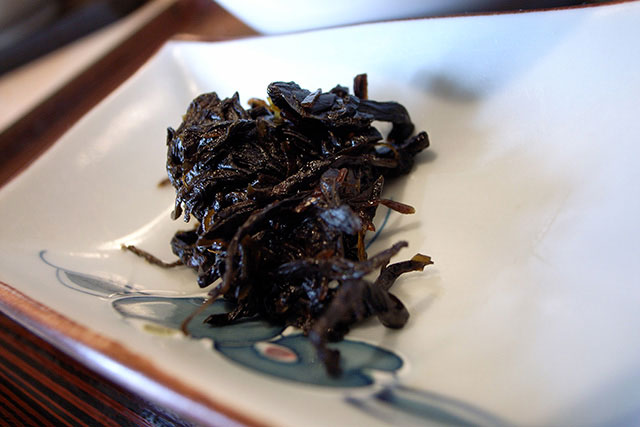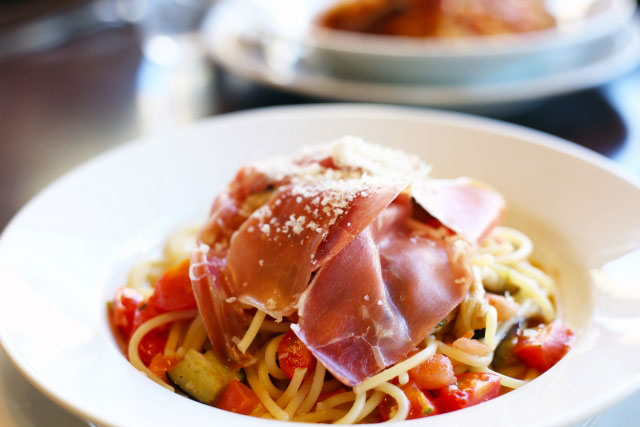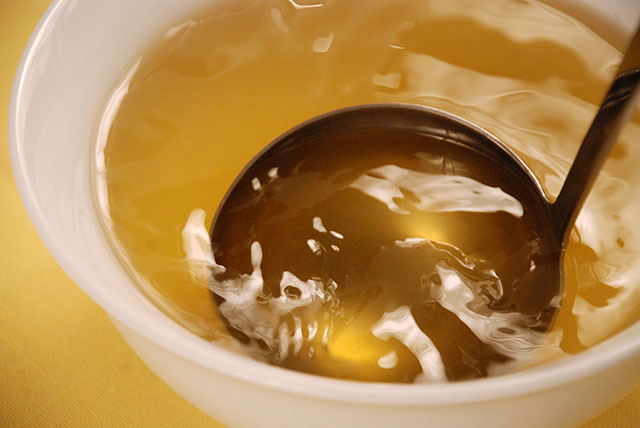
Last month we began our exploration of umami, the “delicious taste” discovered by Dr. Kikunae Ikeda in 1908. Umami is the rich flavor imparted from foods that contain high levels of glutamates, a type of amino acid that, when ingested, tells the brain that the food the body is about to receive is savory, desirable and full of protein.
Umami is at the heart of a Japanese cooking liquid called dashi, which was studied by Dr. Ikeda and which forms the foundation of many Japanese dishes. Dashi is an all-purpose, light stock made simply from an umami-rich ingredient and water. Its role in Japanese cuisine can’t be overemphasized, as it is used to season simmered and steamed dishes, flavor soups and create a base for marinades.
While preparing dashi is simple, it requires a meticulous attention to detail.
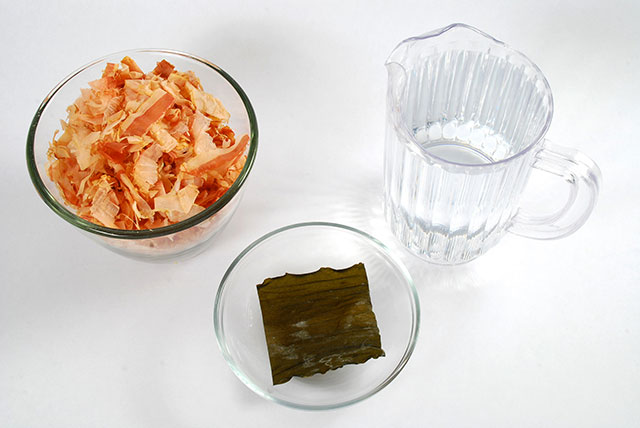
Top left, shaved Bonito flakes; bottom, konbu
When made from scratch, dashi is made from clean, soft water. Various ingredients are added to the water to give it flavor and to impart umami. The classic way to prepare dashi is to make ichibandashi, which typically consists of simmering shaved bonito flakes—dried, smoked skipjack tuna—and dried konbu kelp in water. While this type of dashi is used to prepare many Japanese dishes, many cooks also use variations of the classic dashi in modern Japanese cooking. Dashi made from dried shiitake mushrooms, dried baby anchovies or sardines, dried scallops, or even just konbu or only bonito flakes have become common additions to the Japanese cook’s dashi repertoire.
When making dashi at home, it’s important to use high-quality ingredients that have been air dried, avoiding frozen ones, as freezing alters the flavor and aroma of the ingredients. The best quality bonito comes in stick form and is approximately six-to-eight inches in length. Bonito sticks look like dense, brown hunks of wood that have an ash-white coating. The sticks are made by filleting skipjack tuna, boiling the fillets, then removing the skin and bones from the fish. The fish is smoked multiple times to dry it and to preserve the richness in the fish’s flavor. After, the dried fish is cultured to continue its preservation, and then finally, dried in the open air. When two sticks of bonito are struck together, they should make a hollow sound, like musical instruments! Dried bonito sticks are then shaved using an appliance similar to a mandoline, called a katsuobushi kezuri, and result in pink curls of fish.

Konbu harvesting
Vegetarian dashi is commonly made using dried konbu or shiitake mushrooms, again with both ingredients of the highest quality. The most prized type of konbu is harvested from the cold waters off of the northern coast of Hokkaido. These giant kelp have wide, thick leaves and a rich amber color. They are harvested, rinsed in sea water and hung out to air dry. Once dried, the konbu will have a distinctive whitish coat, made up of natural sea salts and minerals, which holds much of the seaweed’s flavor. The dried konbu is simply wiped with a damp cloth and then it’s ready to use in making dashi. Simmering dried shiitake mushrooms also makes a vegetarian version of dashi, one with a darker color and more intense flavor.
Cooks often make their dashi from scratch, but when pressed for time, flavorful, high-quality instant, dashi products can be found at Japanese or Asian grocery stores. Modern cooks often keep both as staples in their pantries, giving them versatile options for this foundational ingredient in Japanese cooking.
We’ll share recipes about how to make dashi in our next blog post, so stay tuned! And as always, we’d love to hear how you’ve made dashi, so leave us a comment.
